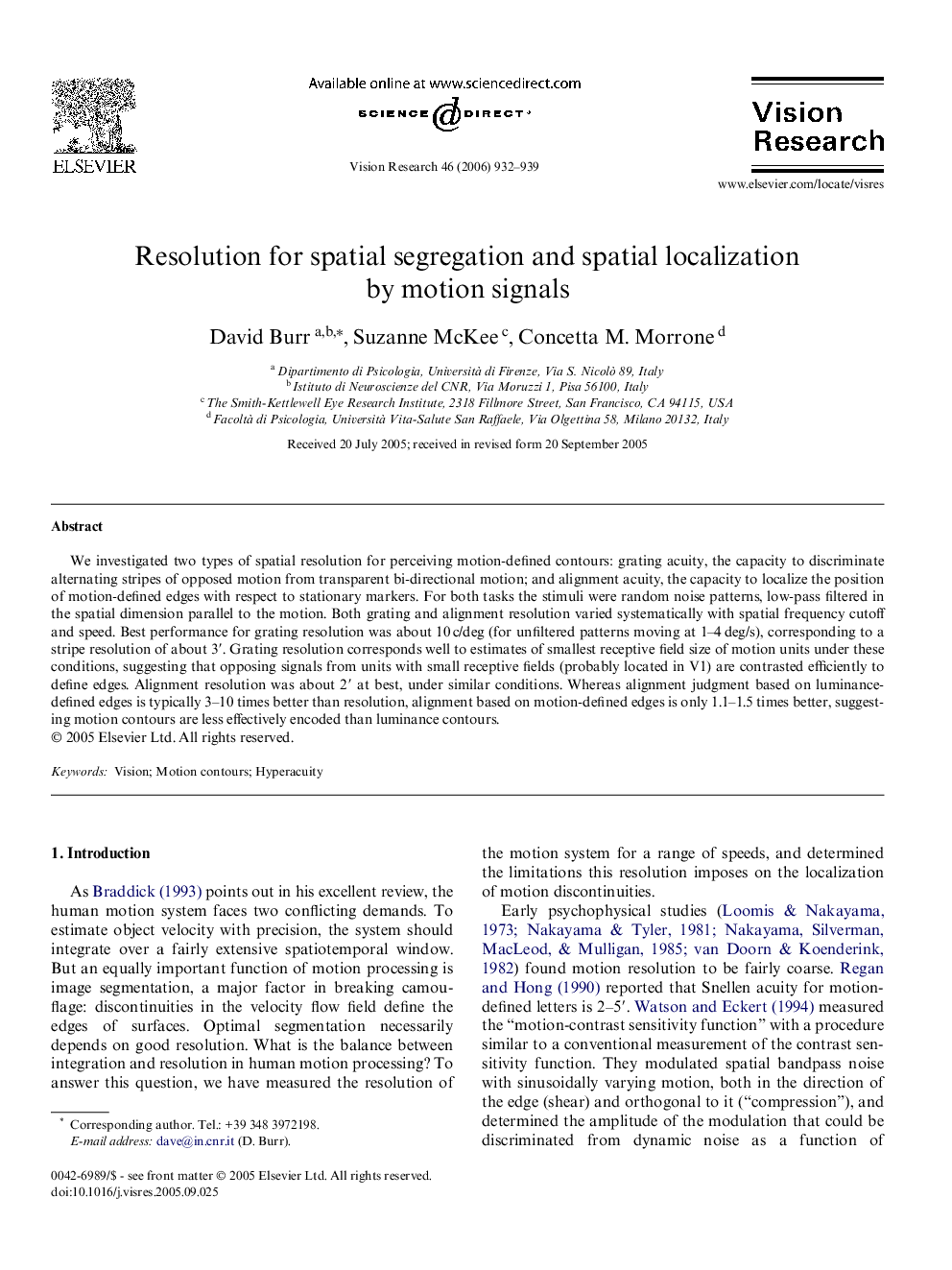| کد مقاله | کد نشریه | سال انتشار | مقاله انگلیسی | نسخه تمام متن |
|---|---|---|---|---|
| 4036351 | 1603246 | 2006 | 8 صفحه PDF | دانلود رایگان |

We investigated two types of spatial resolution for perceiving motion-defined contours: grating acuity, the capacity to discriminate alternating stripes of opposed motion from transparent bi-directional motion; and alignment acuity, the capacity to localize the position of motion-defined edges with respect to stationary markers. For both tasks the stimuli were random noise patterns, low-pass filtered in the spatial dimension parallel to the motion. Both grating and alignment resolution varied systematically with spatial frequency cutoff and speed. Best performance for grating resolution was about 10 c/deg (for unfiltered patterns moving at 1–4 deg/s), corresponding to a stripe resolution of about 3′. Grating resolution corresponds well to estimates of smallest receptive field size of motion units under these conditions, suggesting that opposing signals from units with small receptive fields (probably located in V1) are contrasted efficiently to define edges. Alignment resolution was about 2′ at best, under similar conditions. Whereas alignment judgment based on luminance-defined edges is typically 3–10 times better than resolution, alignment based on motion-defined edges is only 1.1–1.5 times better, suggesting motion contours are less effectively encoded than luminance contours.
Journal: Vision Research - Volume 46, Issues 6–7, March 2006, Pages 932–939